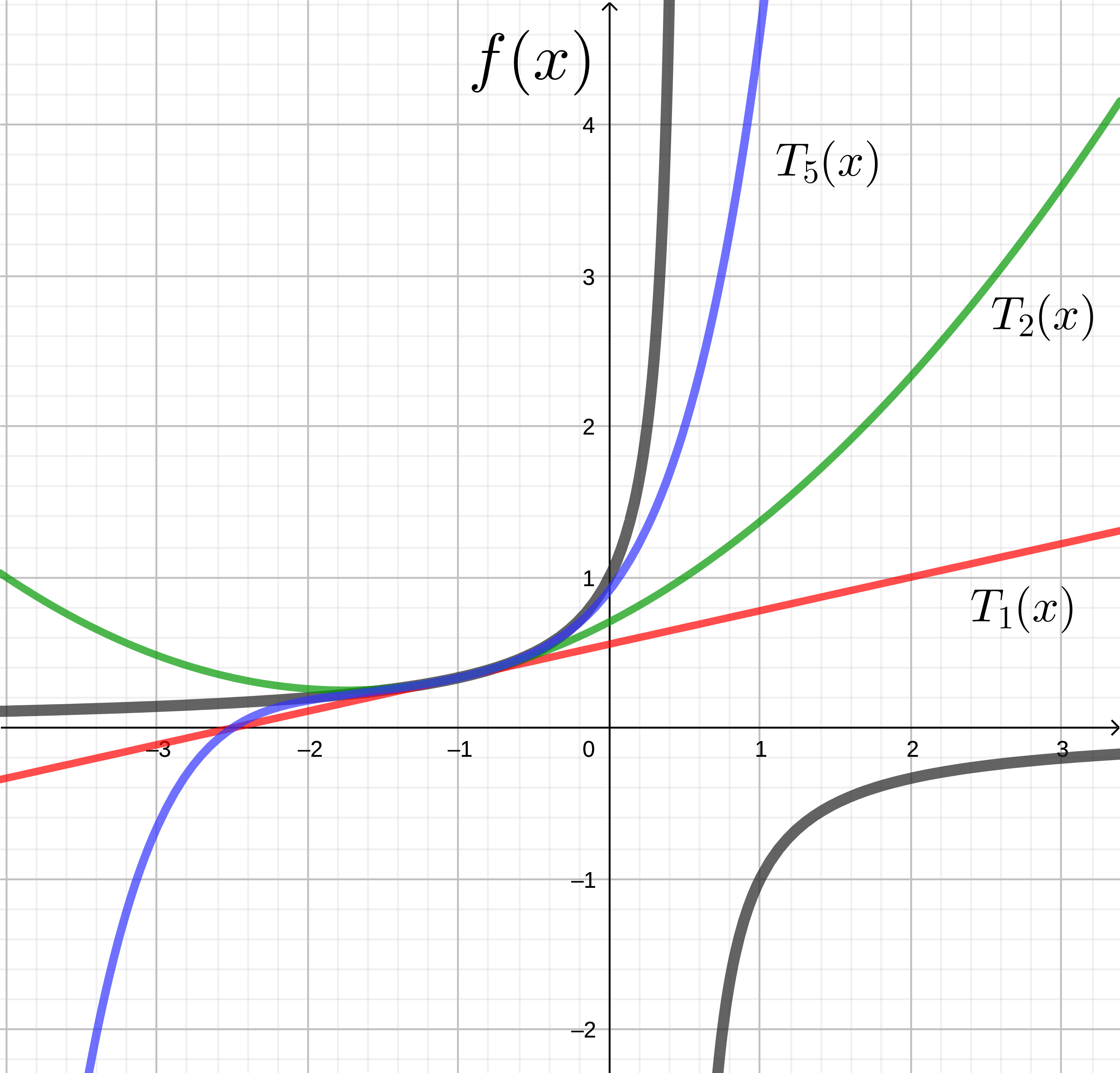(PS5) Taylor and Maclaurin Series#
In this lesson we are going to see:
how to find the Taylor and Maclaurin Series for a given function.
how to find the \(n\)-th degree Taylor polynomial for a given function.
Review Videos#
Definitions#
Taylor Series
Given a function \(f\), the Taylor Series of \(f\) centered at \(a\) is given by:
A few comments about the notation:
Factorial \(0!=1\)
\(f^{(n)}(a)\) represents the \(n\)-th derivative evaluated at \(a\).
We also have the special case of the Taylor Series where we set \(a=0\). This is called the Maclaurin Series:
Maclaurin Series
Given a function \(f\), the Maclaurin Series is given by:
Example 1#
Find the Maclaurin Series of the function \(f(x)=e^x\). Find the Radius of Convergence of the series.
Example 2#
Find the Taylor Series of the function \(f(x)=e^x\) centered at \(a=3\).
Power Series Representation#
Theorem
If a function has a power series representation centered at \(a\), then the function is equal to its Taylor Series at \(a\):
Note:
This theorem requires that function \(f\) has a power series representation. However, not every function has such a representation.
Every function we will be considering though, does have a power series representation.
Proof#
Suppose function \(f\) has a power series representation centered at \(a\). This means:
To prove the theorem, we need to calculate the coefficients \(c_n\).
Example 3#
Find the Maclaurin Series of the function \(f(x)=\sin x\). Find the Radius of Convergence of the series.
Example 4#
Find the Taylor Series of the function \(f(x)=\dfrac{1}{1-2x}\) centered at \(a=-1\). Find the Radius of Convergence of the series.
Taylor Polynomials#
Given a Taylor Series, we call each partial sum the Taylor Polynomial of degree n or \(T_n\). For instance:
Approximations
If function \(f\) has a power series representation centered at \(a\), then these Taylor Polynomials can be used to approximate the value of \(f(x)\).
For example: the \(T_1\) polynomial is the linear approximation.
Example 5#
Approximate the function \(f(x)=\dfrac{1}{1-2x}\) by a Taylor polynomial of degree 2 centered at \(a=-1\).

